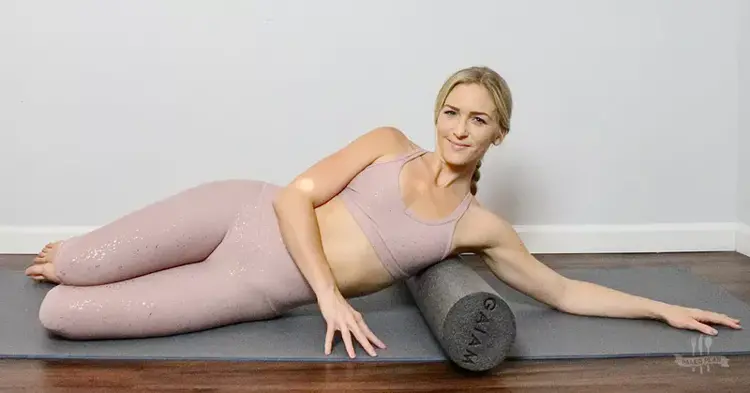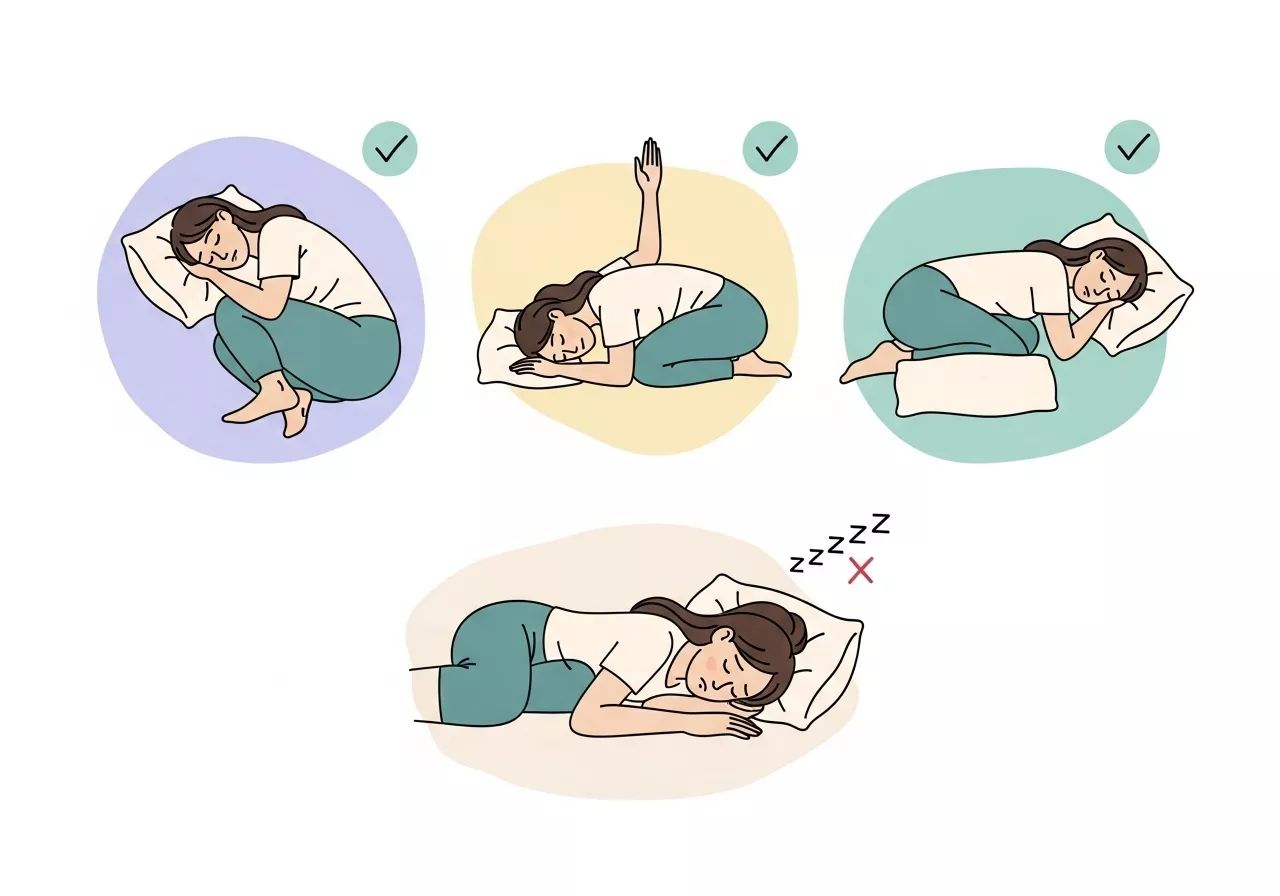Alleviate back pain and enhance mobility with these nine foam roller exercises designed to release muscle tension and improve circulation.
Foam rolling, a form of self-myofascial release (SMR), targets the fascia—the connective tissue encasing muscles—to alleviate stiffness and discomfort.

By addressing trigger points, or “knots,” foam rolling can reduce referred pain, which is discomfort felt in areas distant from the actual source.
Regular practice not only increases range of motion but also promotes better posture and expedites recovery from daily activities and workouts.
Guidelines for Effective Foam Rolling:
- Apply Moderate Pressure: Gently press on the muscle with the foam roller, ceasing immediately if you experience sharp or intense pain. Always heed your body’s signals.
- Move Slowly: Roll gradually around painful areas to identify trigger points.
- Hold on Knots: Upon locating a knot, maintain pressure for at least 20 seconds or until the discomfort diminishes, then proceed to the next area.
- Avoid Joints: Refrain from rolling directly over joints to prevent injury.
- Expect Soreness: Mild soreness akin to that after a deep tissue massage is normal. Stay hydrated to aid recovery.
- Consistency is Key: Regular foam rolling sessions yield the best results.
9 Foam Roller Exercises to Relieve Back Pain
1. Mid-Upper Back Roll
Target: Upper back and thoracic spine

- Begin seated on the floor, positioning the foam roller horizontally under your mid-back (just below the shoulder blades).
- Bend your knees with feet flat on the floor, ensuring they are hip-width apart.
- Support your head by clasping your hands behind your neck, keeping your elbows pointed slightly forward.
- Engage your core and gently lift your hips off the ground. Slowly roll upward towards the base of your shoulders, stopping just before your neck.
- Roll back down to your starting position, focusing on any tight or sore areas. Hold pressure for 20–30 seconds on knots or tense spots before continuing.
2. Lat Rollout
Target: Latissimus dorsi (sides of the back)

- Lie on your right side with the foam roller placed just beneath your right armpit, perpendicular to your body.
- Extend your right arm overhead, keeping your palm facing up, and stack your legs one on top of the other.
- Slightly tilt backward to target the lats. Slowly roll from the top of the ribcage down to your mid-back.
- Pause on any tender spots, holding for 20–30 seconds to release tension. Repeat on the left side.
3. Cactus Arms Stretch
Target: Chest and shoulders (postural muscles)

- Lay vertically along the foam roller, ensuring both your head and tailbone are supported.
- Bend your knees, keeping your feet flat and aligned with your hips.
- Bend your elbows at 90 degrees, forming a “cactus” shape with your arms.
- Slowly lower your forearms toward the ground, feeling the stretch across your chest and shoulders.
- Hold this position for 30–60 seconds, breathing deeply and allowing your muscles to relax.
4. Snow Angels on the Roller
Target: Upper back, shoulders, and chest

- Begin in the same position as the Cactus Arms Stretch, lying lengthwise on the foam roller with head and hips supported.
- Start with your arms resting along your sides, palms facing upward.
- Slowly raise your arms overhead in a wide arc, mimicking a “snow angel” motion.
- Move slowly, pausing when you feel tension or tightness, and bring your arms back to your sides.
- Repeat this motion 8–10 times to open up the shoulders and chest.
5. Thoracic Extension
Target: Thoracic spine mobility

- Position the foam roller horizontally under your upper back, just below the shoulder blades.
- Bend your knees with feet flat on the ground.
- Support your head lightly with your hands, keeping your elbows pointed forward.
- Gently lean back over the roller, allowing your upper spine to extend.
- Pause at the peak of the stretch for 5–10 seconds, then return to a neutral position.
- Repeat this motion 6–8 times, gradually working to improve mobility.
6. Lower Back Roll
Target: Lumbar region (lower back)

- Sit on the floor with the foam roller positioned under your lower back.
- Bend your knees, keeping your feet flat on the ground, and rest your hands on the floor for balance.
- Use your legs to slowly move the foam roller up your lower back, stopping at your mid-back.
- Roll gently back and forth, pausing on tense spots. Avoid applying too much pressure directly to the spine.
- Repeat for 1–2 minutes.
7. Glute Roll
Target: Gluteal muscles (buttocks)

- Sit on the foam roller, leaning slightly to one side.
- Cross one ankle over the opposite knee, forming a figure-four position.
- Shift your weight onto the side of the crossed leg and slowly roll over the glute area.
- Focus on finding tight areas and hold for 20–30 seconds before continuing.
- Switch sides and repeat.
8. Hip Flexor Roll
Target: Hip flexors and quads (front of the hips)

- Lie face down with the foam roller placed just below one hip, perpendicular to your body.
- Extend your legs behind you, keeping your upper body supported on your forearms.
- Slowly roll from the hip down to the middle of the thigh, pausing on tight spots.
- Repeat for 1–2 minutes on each side. This exercise helps alleviate tightness in the hip flexors, which often contribute to back pain.
9. IT Band Roll
Target: Iliotibial (IT) band, outer thigh

- Lie on your side with the foam roller positioned under the outside of your thigh, near the hip.
- Stack your legs or cross the top leg in front for support, placing your hands on the ground for balance.
- Slowly roll down the side of your leg, from the hip to just above the knee.
- Focus on tight or tender areas, holding for 20–30 seconds as needed.
- Repeat on the opposite side. While the IT band itself is connective tissue, rolling this area helps reduce tension in surrounding muscles that can affect back alignment.
Incorporating these foam roller exercises into your routine can significantly reduce back pain and improve overall muscle function.
Remember to perform each movement mindfully, focusing on areas of tension, and maintain consistency for optimal benefits.



